The first recorded fire in Indianapolis in a newly built wooden tavern opposite the courthouse on Washington Street, on January 17, 1825, found the city without a firefighting force (see ). Not until June 20, 1826, almost a year and a half later—under a state law of 1821 which permitted 40 or more citizens to organize a company, make rules and regulations, and collect fines for violations—was a volunteer fire company established.
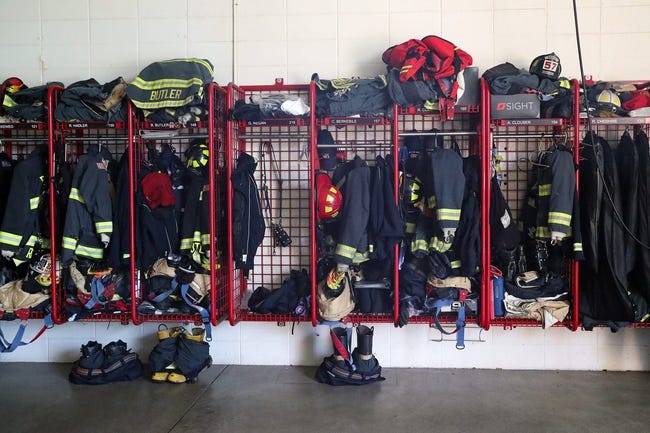
Its equipment was limited to leather buckets and ladders. Church bells sounded the alarm. To protect the new , an 1835 law obligated the state to purchase fire buckets and ladders and erect an engine house. To be instituted, this offer depended on city residents paying half the cost of a “first-rate fire engine” and the necessary hose. A second-hand engine purchased for $1,800, named the “Marion,” arrived in September 1835. Five public wells were dug, and the bucket company merged into the new organization, the Marion Fire, Hose, and Protection Company. A second volunteer company was organized in 1841.
Badges served to distinguish firemen from civilians after 1843, and later leather hats were worn both for protection and identification. In 1847, the church bell of Roberts Chapel, at Pennsylvania and Market streets (see ), began to serve as the city’s fire bell. Six more companies organized by 1859. Nearly 600 men were listed on the rolls, and members were exempt from militia and jury duty, poll, and road taxes.
The Early Years of the Indianapolis Fire Department (1859-1890)
The undue and fractious political influence of the volunteer companies through their Fire Association prompted a shift to paid firemen, as did the anticipated purchase of a newly invented and expensive steam fire engine. An additional factor was the habit of the volunteer companies, acting as moral guardians of the community, to burst into houses of prostitution, hosing down the occupants and ruining the interiors. Unable to control the volunteer companies, city councilmen passed an ordinance to establish the paid force on November 14, 1859. It allowed the chief fire engineer and his two assistants to arrest persons supplying firemen with liquor and forbade card or dice games in the stations at any time. Unlike most cities, the change in Indianapolis was remarkably free of rancor.
The Indianapolis Fire Department (IFD) began with two hand engines and a hook-and-ladder company. The first steam engine arrived in March 1860, and two more before the end of the year. Two members of each engine company remained at the station at all times and received $300 a year. The others, who served only at fires, were paid $25. A watchtower was erected atop one of the taller buildings. The fire department assigned men to be stationed there with field-glass to spot fires and give the alarm.
The annual report to the council for the year ending May 15, 1864, listed three steam engines, one hook-and-ladder company, and 15 horses. The total cost to the city was just under $16,500 (nearly $275,000 in 2020). The 28 men (including the fire chief) who made up the force counted three engineers, 7 drivers, 2 tower watchmen, and 12 hose men. Forty-five cisterns dotted the city, though some of the newer neighborhoods lacked them. The department was called out 54 times to 47 fires, and there were 7 false alarms. All firemen lived at the firehouses. Given no days off, they could not leave their posts except for one meal, sickness in the family, or on department business—and then for no longer than strictly necessary.
Indianapolis firemen were uniformed in 1874. In 1876, Chief W. O. Sherwood hired four African Americans to form Hose Company 9, the city’s first African American fire company. Company 9 originally was located at 31 W. St. Joseph Street. Although IFD was among the first departments to hire African Americans, the company took new hires only with the departure or death of Company 9 members.
Political influence and public employment went hand in hand in the 19th century and later. While the annual report of 1876-1877 stated that firemen were to take no active role in politics, the office of fire chief was always political. Family influence was usually crucial in gaining appointment and promotion invariably depended on political affiliation.
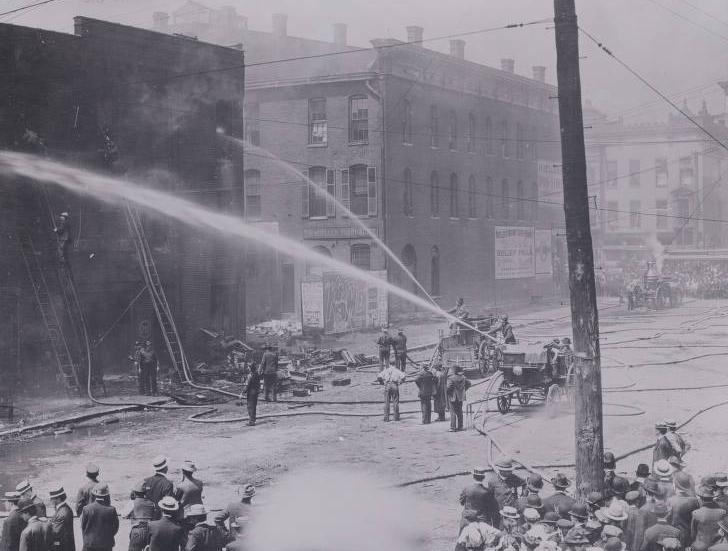
In the years following the Civil War, the growth of the department was rapid and substantial. In 1877, 79 men operated 7 steamers, 11 hose reels, and 2 hook-and-ladder companies, drawn by 34 horses. The fireman’s week remained 7 days, 24 hours a day, but from the late 1870s, he could sleep one night at home. The cost of the IFD had risen to over $96,000 (about $2.4 million in 2020), nearly a sixfold increase in 14 years. The number of alarms, 189, was three times the 1864-1865 total.
An electric alarm system was installed in 1868, and the engine, reel houses, and the fire chief’s home were connected by telephone in 1880. Water lines—50 miles by 1880 (599 hydrants)—were supplemented by 144 cisterns. The all-Black unit, Hose Company 9, moved to 1602 N. Carrollton Avenue in 1881. In 1882, watchmen moved to a tower atop the courthouse.
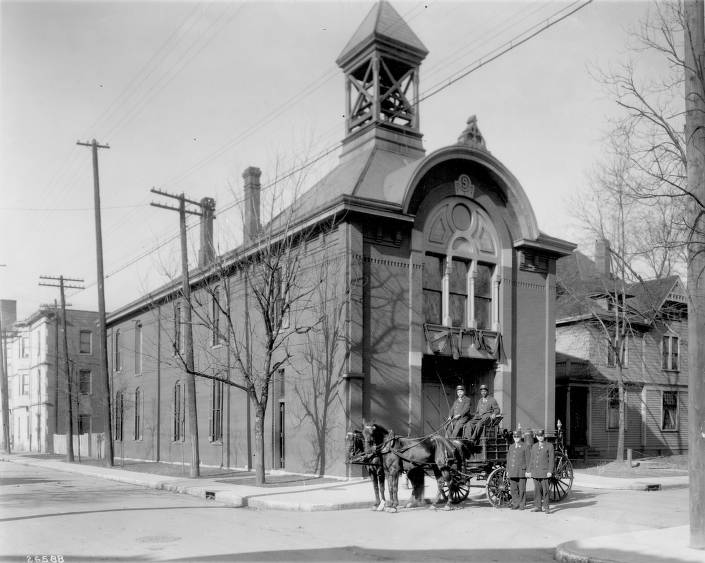
Improvement and Expansion (1891-1928)
Further improvements and expansion took place under the Charter of 1891. The charter recognized that the offices of fire chief always had been political and stipulated that the department (and the police [see ]) be divided equally between Republicans and Democrats (see and ). Although from time to time fire chiefs asserted that politics would play no part in the department, family influence and political affiliation remained dominant factors in their appointment.
In 1893, the supplied 107 miles of mains and 931 public hydrants over the 21-square-mile area, including , that comprised the IFD district. By 1894, firemen received a week’s vacation with pay. The threat of higher rates by fire insurance companies also spurred improvements. The Fire Inspection Bureau, maintained by the insurance companies after 1894, inspected buildings and premises and used higher rates to gain compliance from property owners. The Gamewell system of 280 pull boxes replaced the older electric alarms after 1901.
After 1904, no new frame buildings were to be built in the , crowning efforts dating from May 1859 to mandate brick construction in the city’s center. The department’s shift from horses to motor vehicles began in 1908 with the purchase of a Marion roadster for the chief. In 1909, the department consisted of 264 men with a payroll of $227,000 (about $6.5 million in 2020), 12 engines, 27 hose reel wagons, 4 chemical engines, 10 hook-and-ladder companies, and 121 horses. Fire hydrants numbered 2,371 and were supplemented by 177 cisterns.
By 1912, firefighters had one day a week off. In 1919, an ordinance created a division of fire prevention with a director and four firemen. A training class held by the fire chief instructed each member of the force in inspections and abatement orders. In 1921, IFD was fully motorized, and a two-platoon system (one of 10 hours, the other 14) was inaugurated that same year, with the men rotating shifts every two weeks. A year later, this confusing arrangement was dropped for one of 24 hours on and 24 off, a workweek of 84 hours.
Company 9 was renumbered and became Station No. 1, located at 441 Indiana Avenue, in 1922. Station No. 1 expanded to become an all-Black double company, employing approximately 24 firefighters who rotated through two 24-hour shifts.
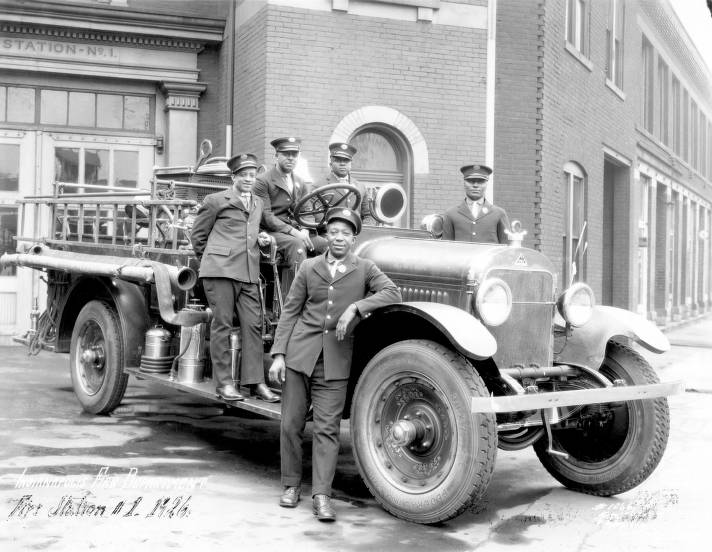
Until 1929, the department offered no significant training to its firemen. Appointed by an Indianapolis ward, or political district, chairman and assigned to a station, new firemen learned on the job. Applicants attended drill school at their own expense with no guarantee of employment. Standards were minimal: 21 to 30 years old, average weight, a character check in the neighborhood, clean record with the police. The department gave new firemen an initial clothing allowance, but after that, they bore the cost of their clothes and equipment.
Improved Standards and Professionalization (1928-1967)
, fire chief from 1928 to 1935, instituted many changes to make the department more professional. Upon his appointment, he voiced a desire to rid IFD of political interference that hindered its sound operation. During his tenure, he established the policy of building, rather than buying, the department’s fire engines; improved the living quarters for firemen (every engine house was remodeled); and won a reputation for IFD as the department that “fights fires from the inside.”
During his first year as chief, the department finally adopted a regulation uniform and implemented service stripes and summer caps in 1929. Voshell also installed the first radio receivers in the chief’s car and in the fire stations in 1932. The department abandoned the use of cisterns that same year.
Voshell, who retired from the department in 1940 at age 70 as a drill instructor and battalion chief, served one of the longest stints as fire chief and was one of the most notable of the men who have headed IFD. Yet, hours for firefighters remained long, with few breaks. Despite Voshell’s intention to rid the department of partisan politics, it is not clear that he was entirely successful. A captain, who retired in 1943 after 44 years, said that he would not make the same career decision: “Too much confinement and too much politics in our business.”
Standards improved after World War II. In 1948, firemen got an extra day off every seventh working day and a 72-hour workweek. The 62 men who vied for 15 vacancies received 80 hours of instruction. Two-way radios on fire equipment appeared in 1947, and the fire department finally replaced the Gamewell alarm system of 280 pull boxes with a more modern system in 1955.
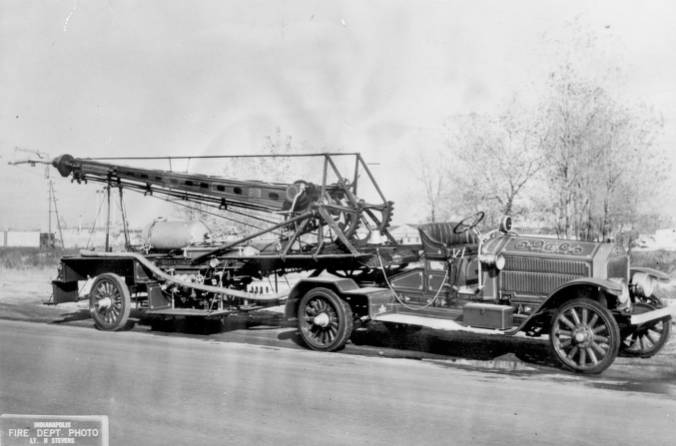
Segregation came to an end on January 1, 1960. At that time, four Black firemen transferred to two other stations than Station No. 1. In 1962, six whites (including a captain and a lieutenant) moved to Station No. 1.
With the adoption of the three-platoon system in 1966 (24 hours on, 48 off), 56 hours remained the weekly stint. Marking another change, “Spot,” the last of the firehouse dogs, was killed in 1967. Working service animals replaced the traditional firehouse dog in the last decades of the 20th century.
Development of the Modern Fire Department (1968-2020)
At the end of the 20th century, the work of IFD underwent significant reform. The recruit class of July 1969 was the first to be appointed to the department and paid while attending six weeks of class. The provision of emergency medical aid, increased integration, initiation of an IFD/Indianapolis Police Department arson team, and changes following the 1992 fire also made extraordinary inroads on traditional firefighting. In addition, , directed by IFD, organized as a Federal Emergency Management Agency (FEMA) Urban Search and Rescue Team in 1992. In 2007, the Washington and Warren township fire departments, which had remained separate following the consolidation of city and county government with in 1970, merged with IFD, and other township fire department mergers followed.
Emergency Medical Services
Through 1969, the police department handled the great majority of the city’s rescue runs. After 1970, IFD was given primary responsibility for delivering first aid. This shift grew out of a 1966 federal highway act that charged the U.S. Department of Transportation with developing standards of emergency medical care in pre-hospital settings.

A curriculum soon emerged for certifying emergency medical technicians (EMTs). Rescue runs soon dwarfed fires and other emergency responses of IFD. The six EMT-trained firefighters of 1976 grew to 320 in 1985, when training was required of all recruits. Emergency medical service runs grew from 6,468 in 1980 (fire emergencies, 5,904) to 41,331 in 1989, while fire runs less than doubled. In 1979, EMT runs accounted for 46 percent of all IFD responses. By 1989, they constituted 80 percent of IFD incidents. At the same time, IFD training extended to 17 weeks and included instruction in hazardous materials, firefighting, and emergency medical service. IFD further upgraded its emergency medical capabilities to provide life support care, graduating its first class of paramedics in March 1992.
The IFD/Indianapolis Police Department Arson Team
Until March 1968 when the first arson squad was established, suspicious fires were handled by the Fire Prevention Bureau, with a police officer assigned to “arson detail.” In 1970, the arson squad was separated from the bureau, and a joint investigative team created with the Indianapolis Police Department. Despite an estimated one arson fires a day, prosecutions fell, and in 1984 the system was reorganized with fire investigations combined into one agency. Command of the team began to rotate between police and firefighters, and all members received extensive training in the other specialty. In July 1993, IFD acquired its first arson-sniffing dog, a method found useful in other departments.
Improved Diversity
By 1974, 18 of the then 33 fire stations were integrated. In 1978, IFD hired Bryona Slaughter, also an African American, as its first female firefighter. Joseph Kimbrew became the first African American fire chief for IFD on January 19, 1987. Other noteworthy early Black IFD firefighters include Pellman Johnson, Dwayne Rogers, Herbert Miller, Henry Tanner, and Edward Rogers. On July 17, 2014, Ernest Malone became the 42nd IFD fire chief.
By 2020, 189 firefighters, or 15.7 percent, were African American, while they made up 27.5 percent of the population. Only 22, or 1.8 percent, were Latino, although they made up 10.9 percent of the population; and only 8.7 percent, were of Asian descent. In total, ethnic minorities made up 18.2 percent of IFD personnel. After Slaughter joined the Indianapolis Fire Department in 1978, IFD 21 women (approximately 3 percent} by the early 1990s. In February 2020, 62 women comprised the ranks in 44 IFD stations, representing 5 percent of the total IFD force (a 60 percent increase since the 1990s).
Changes after the Indianapolis Athletic Club Fire
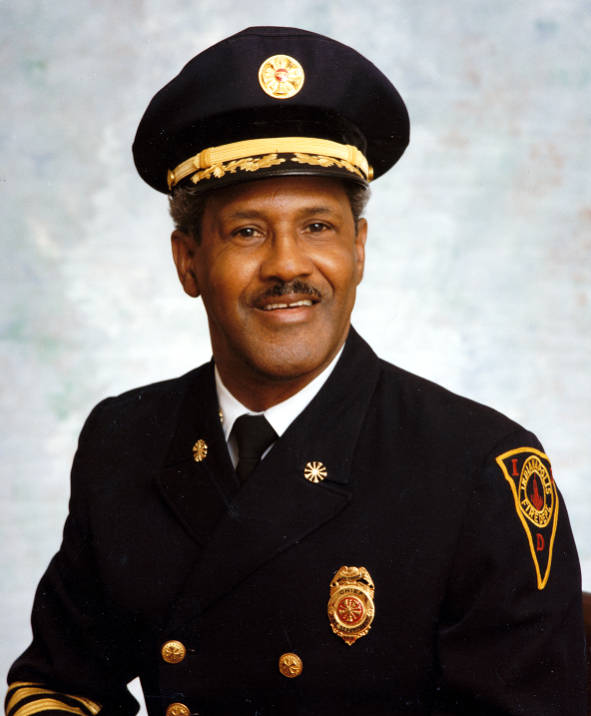
The Indianapolis Athletic Club fire, which broke out just after midnight on February 5, 1992, brought additional changes. The building had no sprinkler system. Two Indianapolis firefighters died while fighting the fire as a result of a flashover, that resulted from the accumulation of superheated gases trapped by concrete on the building’s 4th floor. Following this tragedy, IFD created the High-Rise Ground Manual and purchased a flashover training chamber. The department also implemented Rapid Intervention Team (RIT) training. It acquired improved gear, established a unified reporting system, and created the position of high-rise chief.
These improvements brought attention to IFD and increased pride among its firefighters. In 1995, Indianapolis hosted the first International Fire Department Instructors Conference. The Indianapolis Fire Museum and Fallen Firefighters Memorial opened in 1996 in the restored and refurbished Fire Station No. 2, at 748 Massachusetts Avenue. Built in 1872, Station No. 2 is the oldest standing fire station building in the city.
Requirements for becoming a firefighter became increasingly rigorous. Recruits must attend 25 weeks of training and pass a series of written, oral, and physical tests to become a member of IFD. In the 21st century, more focus also has been drawn to cancer prevention for firefighters. Regularly exposed to toxic gases released by common household goods as they burn, firefighters have an increased cancer risk.
Indiana Task Force One
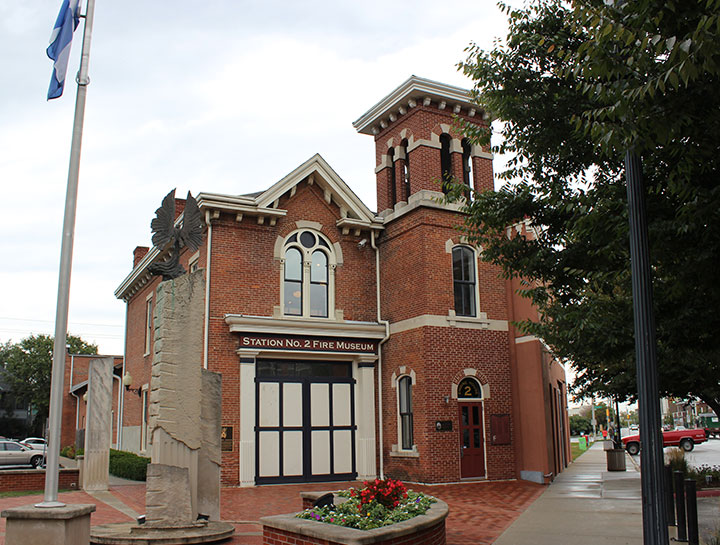
IFD also directs operations for Indiana Task-Force One (IN-TF1). Established in 1992, IN-TF1 is one of 28 Federal Emergency Management Agency (FEMA) Urban Search and Rescue Teams that exist in the U.S. Composed of 202 members from 30 participating agencies across Central Indiana, IN-TF1 has responded to some of the nation’s worst disasters, including the September 11, 2001, attacks on the World Trade Center and hurricanes Katrina, Harvey, Maria, and Florence.
The 2007 IFD Merger
Starting in 1941, proposals to unify IFD with other fire departments in the county periodically arose to improve public safety across Marion County. The earliest proposal forwarded by the Board of Public Safety in 1941 included a plan to have IFD provide fire service countywide, augmented by the township volunteer companies.
Unigov did not accomplish a merger of IFD and the township fire departments. Accomplishing such a merger after 1971 still would involve 12 entities (versus only two for a police-sheriff merger), and Unigov required a petition of a majority of property owners or the owners of three-quarters of the assessed property affected for approval. Such a merger of departments, therefore, proved difficult. A State Senate bill in 1982 to give the greater authority to consolidate IFD and the 11 township fire departments died in committee.
While similar mergers proved cost effective in Los Angeles, and in Jacksonville and Orlando, Florida, its adoption in Indianapolis appeared to be unlikely. In the absence of a merger, the IFD had signed a mutual aid agreement with surrounding townships. Beginning in 1991, IFD had “dual response” pacts with Perry, Washington, and Warren townships, directing that the closest apparatus responds to an emergency call regardless of boundary lines.
Finally in 2007 as part of an initiative that the called Indy Works, the Washington and Warren township fire departments merged with IFD. Perry, Franklin, and Lawrence townships followed in 2009, 2010, and 2011, respectively. In 2020, Decatur, Warren, and Wayne townships continued to operate separate fire departments.

Help improve this entry
Contribute information, offer corrections, suggest images.
You can also recommend new entries related to this topic.

